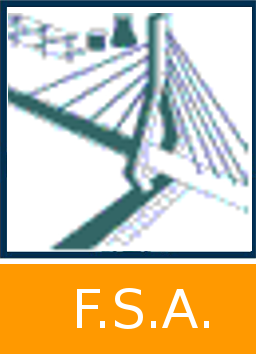Autonomous navigation of a drone in indoor environments
Meurisse, Maxime 
Promoteur(s) :
Geurts, Pierre  ;
Greffe, Christophe
;
Greffe, Christophe
Date de soutenance : 24-jui-2021/25-jui-2021 • URL permanente : http://hdl.handle.net/2268.2/11543
Détails
| Titre : | Autonomous navigation of a drone in indoor environments |
| Titre traduit : | [fr] Navigation autonome d'un drone dans des environnements intérieurs |
| Auteur : | Meurisse, Maxime 
|
| Date de soutenance : | 24-jui-2021/25-jui-2021 |
| Promoteur(s) : | Geurts, Pierre 
Greffe, Christophe |
| Membre(s) du jury : | Redouté, Jean-Michel 
Drion, Guillaume 
|
| Langue : | Anglais |
| Nombre de pages : | 104 |
| Mots-clés : | [en] computer-vision [en] deep-learning [en] autonomous-drone [en] indoor-environments |
| Discipline(s) : | Ingénierie, informatique & technologie > Sciences informatiques |
| Public cible : | Chercheurs Professionnels du domaine Etudiants |
| URL complémentaire : | https://github.com/meurissemax/autonomous-drone https://youtube.com/playlist?list=PLJEcTQrQgiVdacuc2HymqLV9RqjaRMNYt |
| Institution(s) : | Université de Liège, Liège, Belgique |
| Diplôme : | Master en ingénieur civil en informatique, à finalité spécialisée en "intelligent systems" |
| Faculté : | Mémoires de la Faculté des Sciences appliquées |
Résumé
[en] Recent research is attempting to develop autonomous navigation algorithms that allow drones to navigate without the supervision of a pilot. Although the obtained results are promising, there are still many difficulties and no perfect solution, for the moment, exists.
This work is a research and development project on autonomous navigation algorithms for a small programmable drone in indoor environments free of dynamic obstacles. Practically, a Tello EDU has been chosen as the reference drone and the corridors of the Montefiore Institute have been considered as the environment. The hypothesis that the drone has access to a simple representation of its environment, in order to plan paths and analyze them, was posed.
First developed in a simulated environment and then adapted to the real world, algorithms working with Deep Learning models to perform image classification and depth estimation, and ArUco markers have been implemented and evaluated. More advanced elements such as battery station management or staircase passage are also addressed. Using a generic controller, developed in the framework of this work, these algorithms can be used on any drone model.
The tests carried out show that the drone can fly a simple path, from a starting point to an objective, in a completely autonomous way. The different methods studied have their strengths and weaknesses, discussed in this work. The main limitation of the developed algorithms is their robustness to errors and unexpected events. Several possible solutions are discussed.
Finally, this work ends by addressing the technological future of such systems, their integration into our modern society as well as their technical and legal limitations and dangers.
[fr] Des recherches récentes tentent de développer des algorithmes de navigation autonome permettant aux drones de naviguer sans la supervision d'un pilote. Bien que les résultats obtenus soient prometteurs, les difficultés sont encore nombreuses et aucune solution parfaite n'existe pour l'instant.
Ce travail est un projet de recherche et développement sur des algorithmes de navigation autonome pour un petit drone programmable dans des environnements intérieurs exempts d'obstacles dynamiques. En pratique, un Tello EDU a été choisi comme drone de référence et les couloirs de l'Institut Montefiore ont été considérés comme l'environnement. L'hypothèse selon laquelle le drone a accès à une représentation simple de son environnement, afin de planifier des trajectoires et de les analyser, a été posée.
D'abord développés dans un environnement simulé, puis adaptés au monde réel, des algorithmes fonctionnant avec des modèles de Deep Learning pour effectuer la classification d'images et l'estimation de la profondeur, ainsi que des marqueurs ArUco ont été mis en œuvre et évalués. Des éléments plus avancés tels que la gestion des stations de batteries ou le passage d'escaliers sont également abordés. Grâce à un contrôleur générique, développé dans le cadre de ce travail, ces algorithmes peuvent être utilisés sur n'importe quel modèle de drone.
Les tests réalisés montrent que le drone peut effectuer un parcours simple, d'un point de départ à un objectif, de manière totalement autonome. Les différentes méthodes étudiées ont leurs forces et leurs faiblesses, discutées dans ce travail. La principale limite des algorithmes développés est leur robustesse aux erreurs et aux événements inattendus. Plusieurs solutions possibles sont discutées.
Enfin, ce travail se termine en abordant l'avenir technologique de tels systèmes, leur intégration dans notre société moderne ainsi que leurs limites et dangers techniques et juridiques.
Fichier(s)
Document(s)
Citer ce mémoire
L'Université de Liège ne garantit pas la qualité scientifique de ces travaux d'étudiants ni l'exactitude de l'ensemble des informations qu'ils contiennent.


 Master Thesis Online
Master Thesis Online



 Tous les fichiers (archive ZIP)
Tous les fichiers (archive ZIP) master_thesis_meurisse_report.pdf
master_thesis_meurisse_report.pdf

